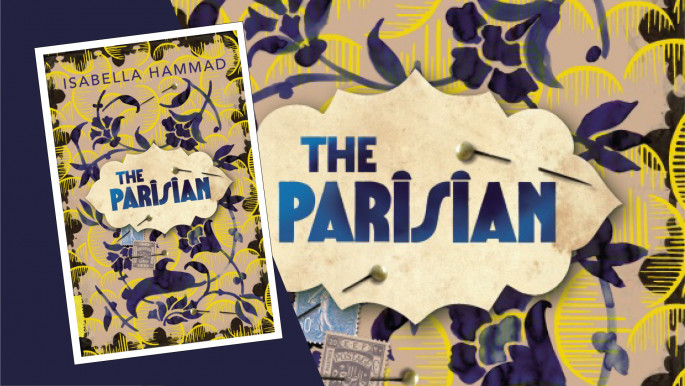Enclosure: Palestinian Landscapes in a Historical Mirror
In order to impose the new parameters, land becomes an exclusionary space, thus creating "enclosures" – the key word for this study derived from a conversation which the author had with Qalqilya's mayor, Ma'arouf Zahran.
Fields shows that cleansing land of inhabitants has historical precedents. His research documents three histories of dispossession: the English dispossession of farmers in the 17th and 18th centuries, the colonial dispossession of Native Americans and the Zionist ethnic cleansing of Palestine. In all three cases, there is a recurring narrative of modernisation juxtaposed against the established lifestyles of existing communities.
For modernisation to be implemented, force becomes a necessity that writes itself through various forms of control and exclusion. Land architecture becomes one of the main manifestations of such exclusions and the adverse effects on the excluded populations are juxtaposed against the distinguished space and commodities of the privileged.
Fields identifies "fences, hedges and walls" as main components of landscape architecture demarcating space. In England, the territorial boundaries established by estate owners forced the dispossessed outside the "enclosure areas", thus altering their social and legal status. Native Americans were driven to reservation areas by the white European colonists. In Palestine, meanwhile, the Zionist colonial project is perpetually expanding over the remaining Palestinian territory and creating a permanently displaced population.
 |
His research documents three histories of dispossession: the English dispossession of farmers in the 17th and 18th centuries, the colonial dispossession of Native Americans and the Zionist ethnic cleansing of Palestine |  |
The book emphasises the importance of not isolating Palestinian dispossession as a unique trajectory, referring to Ze'ev Jabotinsky's 1923 essay titled The Iron Wall in which he draws similarities between the colonisation of North America and Palestine and, furthermore, affirms that "No indigenous people will ever accept the expropriation of their land without resisting."
 |
|
| Read more from The New Arab's Book Club: The Parisian: The First World War through the eyes of a Palestinian |
In seizing control of land through force, the colonists implement systems which legalise their appropriation.
Force is therefore also manifested in cartography, law and architecture. By maintaining discourse of improving land, the colonial discourse also refuses to acknowledge the existing communities' use of land.
Fields describes Palestine's colonisation thus: "despite overwhelming evidence of Palestinian presence, visions of a Jewish landscape in Palestine were able to emerge from a largely improvement-driven notion of rights to land."
To justify dispossession, Zionism claimed that Palestinians only exercised cultivation rights to land, as opposed to land rights. From this premise, the imaginings of Zionism to implement and justify the colonial landscapes was able to bring together three settler priorities: human agency, Jewish settlement and agricultural settlement. Zionism also sought contiguous land purchase to facilitate state building on colonised land.
Fields also shows how Zionist colonisers employed a strategy that sought to annihilate the indigenous claims to land. Further to establishing Hebrew as an official language, Zionist appropriation of history and archaeology enabled the emergence of settler-colonial narratives disguised as "Hebrew past". Cartography was also used to "convey to the outside world a vision of Palestine as a Hebrew space."
This dynamic, the author shows, was substantiated by Zionist colonists to deliberately erase all traces of Palestinian land ownership. As dispossession was legalised by the colonial framework, contradictions between the meaning of land for the indigenous Palestinian population and the Zionist settlers emerged, with the Naqab proving to be Israel's greatest contention.
In his book Fields identifies three main steps to colonisation: land transfer from the indigenous to the colonisers, dispossession of the indigenous population and the establishment of a new system and community on cleansed territory.
Likewise, there is an admission by the colonisers that the indigenous will resist the new control and settlement – a reality which is embodied by the Bedouin community despite facing eviction. The author explains how nomadism was attributed to the Bedouin to refuse recognition of the people and their place names and thus classify the Bedouin as "people without property and the Negev as empty land."
 |
The three studies in this book show how dominant groups embarked upon 'clearing the landscape of people in order to implement their visions of a modern order' |  |
The three studies in this book show how dominant groups embarked upon "clearing the landscape of people in order to implement their visions of a modern order." Land improvement, therefore, is both an ideological aspiration and an oppressive political strategy. In England, the enclosures enforced upon farmers stemmed from principles of economic gain. In North America, colonial settlement and modernisation were the prevailing motives.
By providing a historical timeframe of these two forms of settlement enclosures, Fields manages to convey the colonisation of Palestine as "the nationalist impulses of state-building articulated in Zionist ideology" in a manner which is reflecting, rather than isolating, the historical dynamics of force over indigenous land. More importantly, the book is a meticulous contribution towards understanding the unfinished colonisation of Palestine.
Order your copy of Enclosure: Palestinian Landscapes in a Historical Mirror here
Ramona Wadi is an independent researcher, freelance journalist, book reviewer and blogger specialising in the struggle for memory in Chile and Palestine, colonial violence and the manipulation of international law.
Follow her on Twitter: @walzerscent






 Follow the Middle East's top stories in English at The New Arab on Google News
Follow the Middle East's top stories in English at The New Arab on Google News


